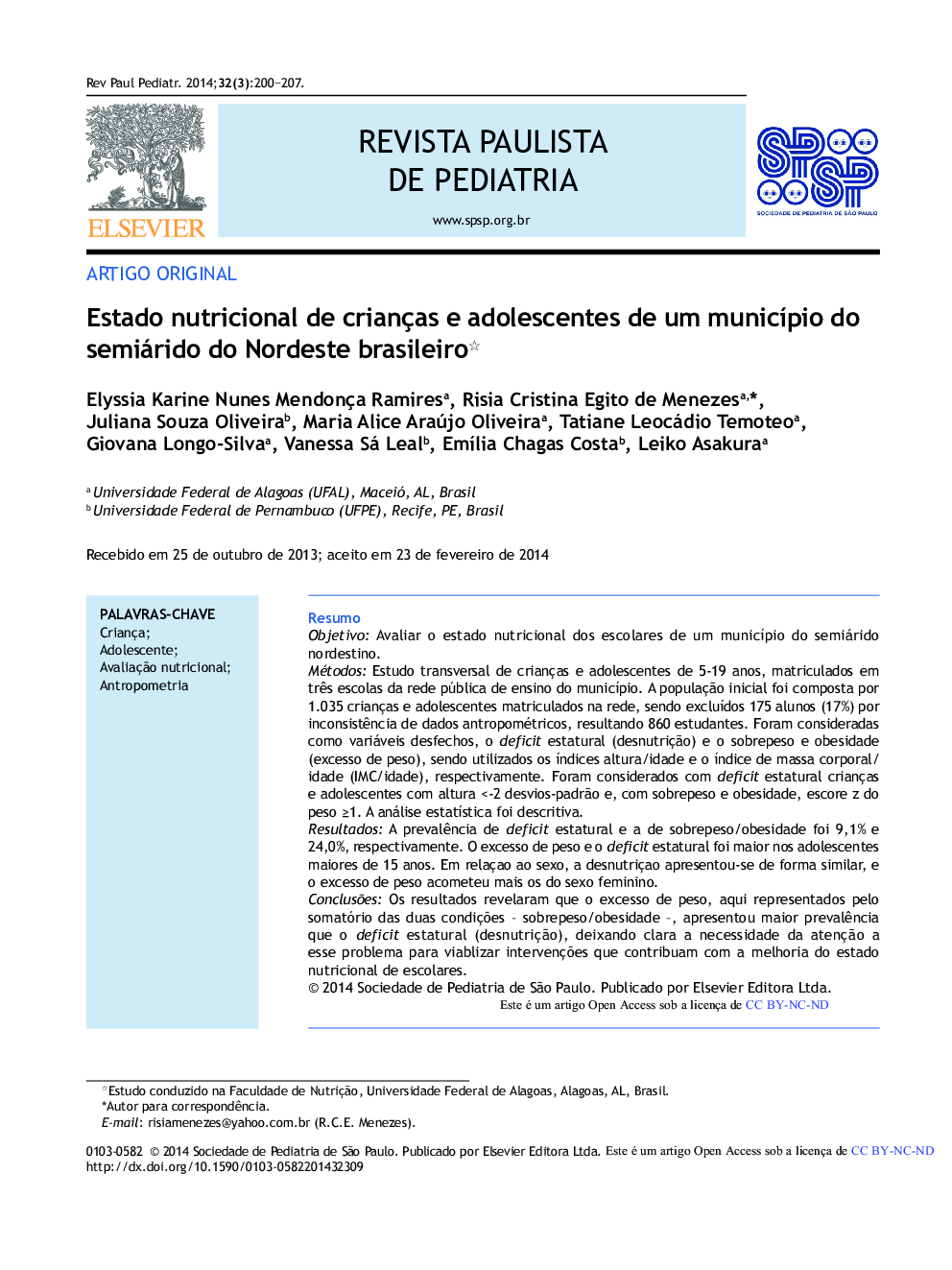| Article ID | Journal | Published Year | Pages | File Type |
|---|---|---|---|---|
| 4176044 | Revista Paulista de Pediatria | 2014 | 8 Pages |
ResumoObjetivoAvaliar o estado nutricional dos escolares de um município do semiárido nordestino.MétodosEstudo transversal de crianças e adolescentes de 5–19 anos, matriculados em três escolas da rede pública de ensino do município. A população inicial foi composta por 1.035 crianças e adolescentes matriculados na rede, sendo excluídos 175 alunos (17%) por inconsistência de dados antropométricos, resultando 860 estudantes. Foram consideradas como variáveis desfechos, o deficit estatural (desnutrição) e o sobrepeso e obesidade (excesso de peso), sendo utilizados os índices altura/idade e o índice de massa corporal/idade (IMC/idade), respectivamente. Foram considerados com deficit estatural crianças e adolescentes com altura <-2 desvios-padrão e, com sobrepeso e obesidade, escore z do peso ≥1. A análise estatística foi descritiva.ResultadosA prevalência de deficit estatural e a de sobrepeso/obesidade foi 9,1% e 24,0%, respectivamente. O excesso de peso e o deficit estatural foi maior nos adolescentes maiores de 15 anos. Em relaçao ao sexo, a desnutriçao apresentou-se de forma similar, e o excesso de peso acometeu mais os do sexo feminino.ConclusõesOs resultados revelaram que o excesso de peso, aqui representados pelo somatório das duas condições – sobrepeso/obesidade –, apresentou maior prevalência que o deficit estatural (desnutrição), deixando clara a necessidade da atenção a esse problema para viablizar intervenções que contribuam com a melhoria do estado nutricional de escolares.
ObjectiveTo evaluate the nutritional status of schoolchildren, resident in a semiarid region in the Northeastern Brazil.MethodsThis is a cross-sectional study, involving 860 children and adolescents aged from 5–19 years-old, enrolled in three public schools in the county. The selection of schools was non-probabilistic type and unintentional. The initial population, which integrated the database, was composed by 1,035 children and teenagers, and 175 students (16.9%) were excluded because of inconsistency in the anthropometric data, resulting in a sample of 860 students. The following outcomes were considered: stunting (malnutrition), overweight and obesity (overweight), being the height/age and body mass index/age (BMI/Age), indices respectively used. Children and adolescents with height <-2 standard deviations and overweight and obese weight z score ≥1 were considered stunted. The statistical analysis was descriptive.ResultsThe prevalence of stunting and overweight/obesity was 9.1% and 24.0%, respectively. Overweight and stunting were higher in adolescents aged 15 and over, compared to other age groups analyzed. In relation to gender, malnutrition presented itself in a similar way, but overweight was more frequent among females.ConclusionsThe results revealed that excess weight, here represented by the sum of overweight and obesity, was more prevalent than stunting (malnutrition), highlighting the urgent need for attention to this problem in order to design interventions capable of contributing to the improvement of schoolchildren nutritional status.
